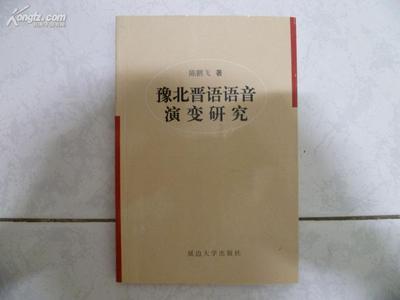Grimm's law
From Wikipedia, the free encyclopediaJump to: navigation, searchGrimm's law (also known as the First GermanicSound Shift or the Rask's-Grimm'srule), named for Jacob Grimm, is a set of statements describingthe inherited Proto-Indo-European (PIE) stops as they developed inProto-Germanic (PGmc, the common ancestor ofthe Germanic branch of the Indo-European family) in the 1st millennium BC. It establishes a set ofregular correspondences between early Germanic stops and fricatives and the stop consonants of certainother centum Indo-European languages (Grimm used mostly Latin and Greek for illustration). As it is presentlyformulated, Grimm's Law consists of three parts, which must bethought of as three consecutive phases in the sense of a chain shift:[1]
- Proto-Indo-European voiceless stops change into voiceless fricatives.
- Proto-Indo-European voiced stops become voiceless stops.
- Proto-Indo-European voiced aspirated stops become voicedfricatives; ultimately, in most Germanic languages these voicedfricatives become voiced stops.
The chain shift can be abstractly represented as:
- bʰ→ b→ p→ f
- dʰ→ d→ t→ θ
- gʰ→ g→ k→ x
- gʷʰ→ gʷ→ kʷ→ xʷ
Here each sound moves one position to the right to take on itsnew sound value.
The voiced aspirated stops may have first become voicedfricatives before hardening to the voiced unaspirated stops "b","d", and "g" under certain conditions; however, some linguistsdispute this. See Proto-Germanic phonology.
Grimm's law was the first non-trivial systematic sound change to be discovered in linguistics; its formulation was a turningpoint in the development of linguistics, enabling the introductionof a rigorous methodology to historical linguistic research. The"law" was discovered by Friedrich von Schlegel in 1806 and Rasmus Christian Rask in 1818. It waselaborated (i.e. extended to include standard German) in 1822 by Jacob Grimm, the elder of the Brothers Grimm, in his book DeutscheGrammatik.
Contents[hide] |
[edit]In detail
Further changes following Grimm's Law, as well as sound changesin other Indo-European languages, can sometimes obscure itseffects. The most illustrative examples are used here.
| Change | Germanic (shifted) examples | Non-Germanic (unshifted) cognates |
|---|---|---|
| *p→f | English: foot,, Dutch: voet, German: Fuß,Gothic: fōtus, Icelandic, Faroese: fótur, Danish:fod, Norwegian, Swedish: fot | Ancient Greek: πούς (pūs), Latin: pēs, pedis,Sanskrit: pāda, Russian: под (pod), Lithuanian:pėda, Latvian pēda |
| *t→þ [θ] | English: third, Old High German: thritto, Gothic:þridja, Icelandic: þriðji | Ancient Greek: τρίτος (tritos), Latin: tertius,Gaelic treas, Irish: trí, Sanskrit: treta,Russian: третий (tretij), Lithuanian: trečias,Latvian trīs |
| *k→h [x] | English: hound, Dutch: hond, German: Hund,Gothic: hunds, Icelandic, Faroese: hundur, Danish,Norwegian, Swedish: hund | Ancient Greek: κύων (kýōn), Latin: canis, Gaelic,Irish: cú, Welsh ci |
| *kʷ→hw [xw] | English: what, Gothic: ƕa ("hwa"), Icelandic: hvað, Faroese:hvat, Danish: hvad, Swedish: vad, Norwegian:hva | Latin: quod, Gaelic: ciod, Irish: cad,Sanskrit: ka-, kiṃ, Russian: ко- (ko-), Lithuanian:kas, Latvian kas |
| *b→p | English: warp; Swedish: värpa; Dutch:werpen; Icelandic, Faroese: varpa, Gothicwairpan | Latin: verber ("rod"), Homeric Greek: ῥάβδος ("rod,wand"), Lithuanian: virbas |
| *d→t | English: ten, Dutch: tien, Gothic: taíhun,Icelandic: tíu, Faroese: tíggju, Danish, Norwegian:ti, Swedish: tio | Latin: decem, Greek: δέκα (déka), Gaelic, Irish:deich, Sanskrit: daśan, Russian: десять(desyat'), Lithuanian: dešimt, Welsh deg,Latvian desmit |
| *g→k | English: cold, Dutch: koud, German: kalt,Icelandic, Faroese: kaldur, Danish: kold, Norwegian:kald, Swedish: kall, | Latin: gelū |
| *gʷ→kw | English: quick, Frisian: quick, queck, Dutch:kwiek, Gothic: qius, Old Norse: kvikr, Danish:kvik, Icelandic, Faroese: kvikur, Swedish:kvick, Norwegian kvikk | Lithuanian: gyvas, Sanskrit jīvá- |
| *bʰ→b | English: brother, Dutch: broeder, German:Bruder, Gothic: broþar, Icelandic, Faroese:bróðir, Danish, Swedish, Norwegian: broder | Sanskrit: bhrātṛ, Ancient Greek: φρατήρ (phrātēr)("member of a brotherhood"), |
| *dʰ→d | English: mead, Icelandic: mjödr | Sanskrit: mádhu 'honey', Homeric Greek: μέθυ,Lithuanian: midus |
| *gʰ→g | English: goose, gander, Frisian: guos,Dutch: gans, German: Gans, Icelandic: gæs,Faroese: gás, Danish, Norwegian, Swedish: gås | Ancient Greek: χήν (khēn), Sanskrit: hamsa(swan) |
| *ngʷʰ→ngw (→ng except in Gothic) | Gothic: tungwō, English: tongue, Dutch:tong, Danish, Norwegian: tunge, Icelandic, Swedish:tunga | Archaic Latin: dingua |
| *gʷʰ→gw→w | English: warm, German: warm, Old Norse:varmr, Swedish: varm | Sanskrit: gharmá-, Homeric Greek: θερμός |
This is strikingly regular. Each phase involves one singlechange which applies equally to the labials (p, b, bʰ, f) and their equivalent dentals(t, d, dʰ, þ), velars (k, g, gʰ, h) and rounded velars (kʷ, gʷ, gʷʰ, hw). The first phase left the phonemerepertoire of the language without voiceless stops, the secondphase filled this gap but created a new one, and so on until thechain had run its course.
[edit]Exceptions
There are three main systematic exceptions.
1. The voiceless stops did not become fricatives if they werepreceded by *s (itself a fricative).
| Change | Germanic examples | Non-Germanic examples |
|---|---|---|
| *sp | English: spew, Gothic: speiwan, Dutch:spuien, German: speien, Danish, Norwegian, Swedish:spy, Icelandic: spýja, Faroese: spýggja | Latin: spuere, Lithuanian: spjauti |
| *st | English: stand, Dutch: staan, German:stehen, Icelandic, Faroese: standa, Danish, Swedish:stå | Latin: stāre, Irish: stad, Sanskrit: sta,Russian: стать (stat'), Lithuanian: stoti, Persian:ايستادن (istâdan) |
| *sk | English: short, Old Norse and Icelandic: skorta,Old High German: scurz | Lithuanian: skurdus |
| *skʷ | English: scold, Old Norse: skäld, Icelandic:skáld, Dutch: schelden, Norwegian: skald | Irish: scioll |
Note:
2. The voiceless stop *t did not become a fricative ifpreceded by *p, *k, or *kʷ (themselves voiceless stops). Thevoiceless stop it was preceded by did fricativize, however. This issometimes treated separately under the heading Germanic spirant law:
| Change | Germanic examples | Non-Germanic examples |
|---|---|---|
| *pt→ft | Gothic: hliftus "thief" | Ancient Greek: κλέπτης (kleptēs) |
| *kt→ht | English: eight, Dutch: acht, Frisian:acht, German: acht, Gothic: ahtáu, Icelandic:átta (pronounced [ˈauhta]) | Ancient Greek: οκτώ (oktō), Latin: octō |
| *kʷt→h(w)t | English: night, Old High German: naht, OldFrisian, Dutch, German: nacht, Gothic: nahts,Icelandic: nótt (pronounced [ˈnouht]) | Greek: νύξ, νυκτ-(nuks, nukt-), Latin: nox,noct-, Sanskrit: नक्तम् (naktam), Lithuanian:naktis, Hittite (genitive): nekuz (pronounced/nekwts/) |
3. The most recalcitrant set of apparent exceptions to Grimm'sLaw, which defied linguists for a few decades, eventually receivedexplanation from the Danish linguist Karl Verner (see the article on Verner's law for details). (This is notnecessarily an actual exception: the traditional dating of Verner'sLaw occurring after Grimm's would mean that the consonants affecteddid undergo Grimm's Law, and were only changed later.)
[edit]Correspondences to PIE
The Germanic "sound laws", combined with regular changesreconstructed for other Indo-European languages, allow one todefine the expected sound correspondences between differentbranches of the family. For example, Germanic (word-initial) *b-corresponds regularly to Latin *f-, Greek pʰ-, Sanskrit bʰ-, Slavic, Baltic or Celtic b-, etc., while Germanic *f-corresponds to Latin, Greek, Sanskrit, Slavic and Baltic p-and to zero (no initial consonant) in Celtic. The former set goesback to PIE *bʰ- (faithfully reflectedin Sanskrit and modified in various ways elsewhere), and the latterset to PIE *p- (shifted in Germanic, lost in Celtic, but preservedin the other groups mentioned here).
[edit]See also
[edit]References
- ^ Campbell,Lyle (2004). Historical linguistics (2nd ed. ed.).Cambridge: MIT Press. pp.49. ISBN0262532670.
- ^ http://www.etymonline.com/index.php?search=night&searchmode=none
- ^ http://www.etymonline.com/index.php?search=eight&searchmode=none
| |||||||||||||||||||||||||||||||
| |||||||||||
 爱华网
爱华网




